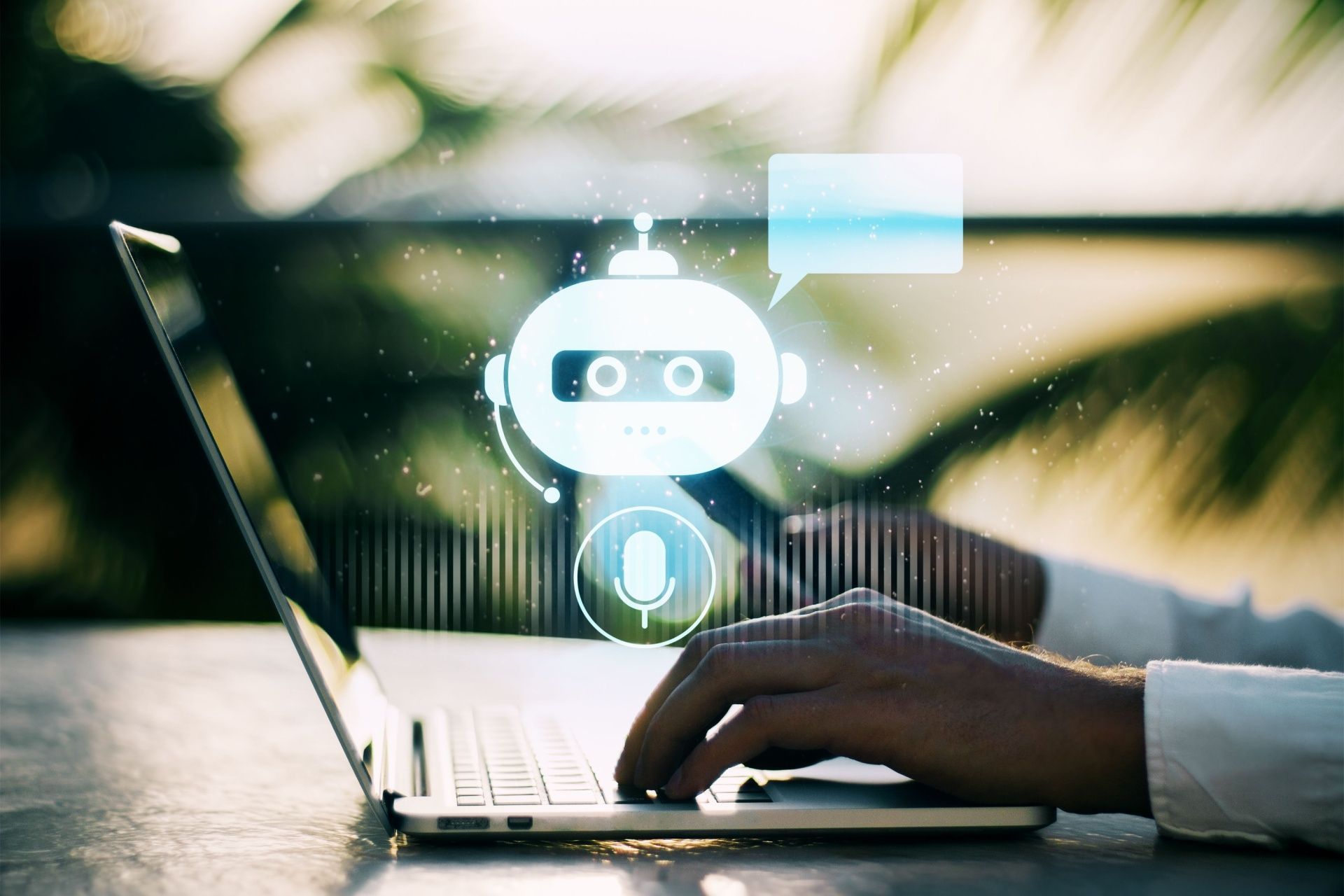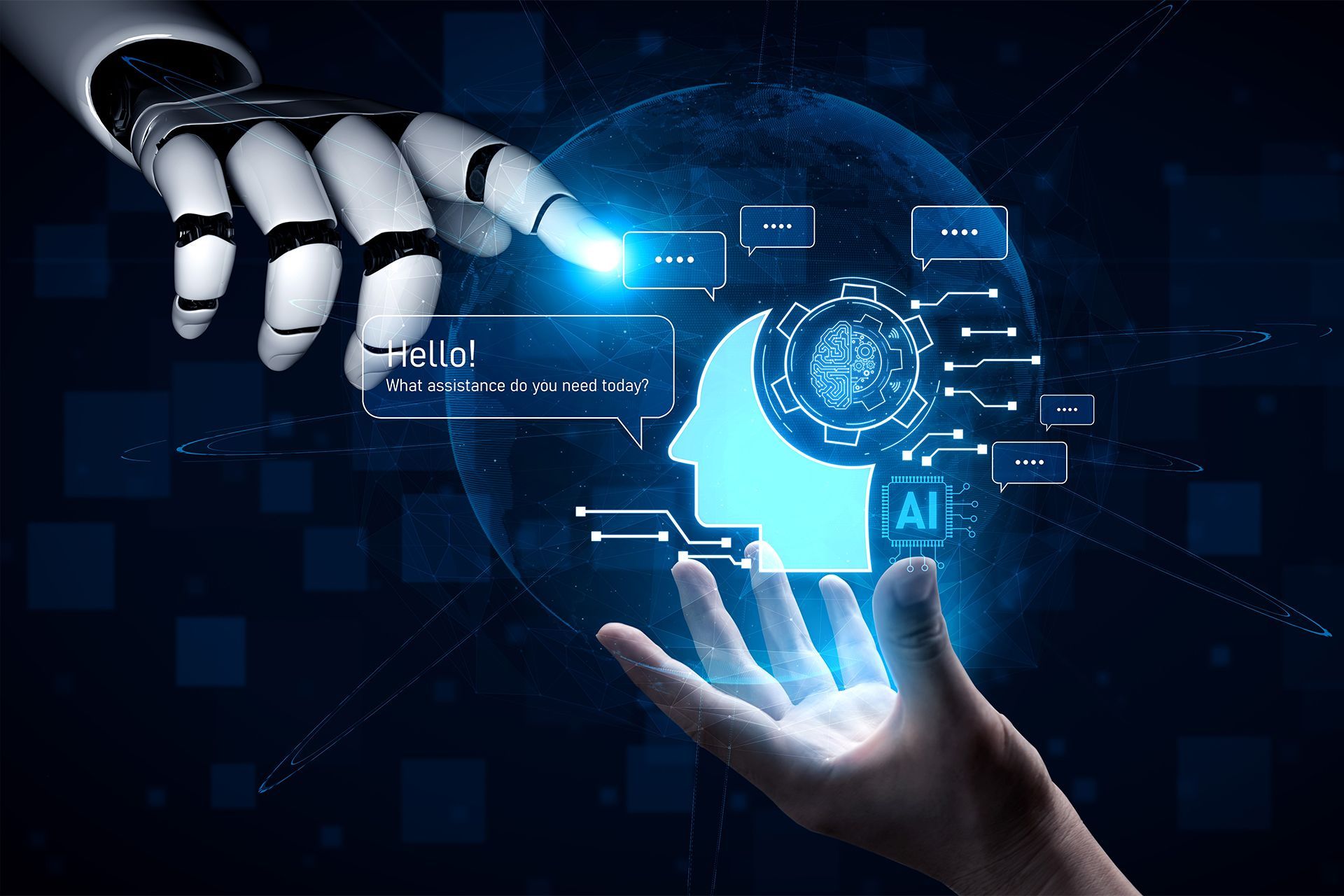What are the Future Trends of AI Chatbots in 2025?

As AI technology rapidly evolves, chatbots are becoming more advanced, intuitive, and essential to the way businesses communicate with customers. According to recent studies, over 90% of customer interactions are projected to be managed by AI chatbots by the end of 2025. This trend highlights a massive shift in digital communication and customer engagement.
From automated appointment scheduling to real-time lead qualification, the future of chatbots is full of possibilities. In this blog, we’ll break down the top chatbot future trends and how businesses can take advantage of these developments to stay ahead of the competition.
1. Smarter, More Human-like Chatbots with Generative AI
One of the biggest breakthroughs in chatbot evolution is the use of generative AI. These new models go beyond scripted answers. They create personalized responses based on the user's tone, history, and intent.
By 2025, the future of AI chatbots will include:
- Real-time learning from conversations
- More natural-sounding dialogue
- Emotion and context awareness
Businesses using smart AI chatbots, like ChatArm, will offer more meaningful and helpful interactions that feel almost human.
2. Multilingual Chatbots for Global Engagement
As brands go global, communication becomes more complex. Multilingual chatbots are stepping in to remove language barriers.
The future of chatbots includes:
- Real-time translation in 100+ languages
- Understanding cultural expressions and slang
- Serving global audiences from a single platform
This trend allows businesses to scale their customer support and sales without hiring large multilingual teams.
3. Hyper-Personalized Customer Journeys
Today’s customers expect more than just fast replies, they want personalized experiences. In 2025 and beyond, AI chatbots will leverage customer data to tailor each conversation.
Chatbots will:
- Recommend products based on past behavior
- Greet customers by name and remember preferences
- Use location and time-based data for smart replies
Personalization isn’t just nice to have, it’s a key factor in building customer loyalty.
4. Voice Integration and Conversational AI
Voice assistants like Alexa and Google Assistant are changing how we interact with technology. Chatbots are joining this voice revolution.
The chatbot future trends in voice include:
- Voice-enabled booking systems
- Conversational AI for hands-free support
- Voice search optimization for business websites
Voice chatbots will provide faster service and improve accessibility for users who prefer speaking over typing.
5. AI Chatbots for Lead Generation and Qualification
One of the most practical trends in the future of AI chatbots is their growing role in lead generation and qualification. Instead of using traditional static forms or waiting for a human rep, businesses in 2025 will rely on smart chatbots to engage potential customers the moment they land on a website or app.
ChatArm makes this easy by:
- Starting conversations automatically with new visitors
- Asking qualifying questions to filter high-intent leads
- Capturing contact details in a natural, non-intrusive way
By using ChatArm’s AI chatbot, businesses can increase their conversion rates while saving time and effort. It works like a 24/7 sales assistant engaging, qualifying, and passing along leads that are ready to convert.
6. Emotionally Intelligent Bots with Sentiment Analysis
One major milestone in the future of AI chatbots is their ability to detect and respond to human emotions. These bots use sentiment analysis to improve user satisfaction.
Emotion-aware chatbots can:
- Offer empathy in difficult situations
- Adjust tone when a customer is angry or upset
- Escalate serious issues to human agents
This leads to better support experiences and builds trust between brands and users.
7. Data Privacy and Secure Conversations
With AI handling more personal data, privacy has become a top concern. The chatbot future includes stronger compliance and user protections.
What to expect in 2025:
- End-to-end encryption
- GDPR and CCPA-compliant features
- Clear opt-in systems for data collection
ChatArm, for instance, uses encrypted systems and transparent policies to ensure users feel safe.
8. AI Chatbots in Healthcare and Wellness
Healthcare is embracing the future of AI chatbots. From appointment reminders to health tips, bots are playing a key role in patient care.
Future use cases include:
- Booking and confirming doctor appointments
- Sending reminders for medications
- Providing mental health check-ins
While chatbots won’t replace medical professionals, they offer valuable support to both patients and healthcare providers.
9. Enhanced E-commerce Experiences with AI Chatbots
E-commerce is one of the fastest-growing areas for chatbot innovation. In 2025, the AI chatbot for eCommerce will play a much bigger role in improving customer journeys and boosting sales.
Chatbots will:
- Help customers find products instantly
- Answer FAQs on returns, shipping, and warranties
- Recommend add-ons and upsell relevant items
This improves conversion rates while reducing cart abandonment.
10. Integration with Augmented Reality (AR) and Virtual Reality (VR)
A futuristic trend that’s gaining traction is the use of chatbots in AR and VR environments.
Future applications include:
- Virtual shopping assistants
- In-game support bots
- VR-based training modules
This technology will create immersive customer service experiences and revolutionize how users interact with brands.
Why ChatArm Is Ready for the Future of Chatbots
ChatArm is at the forefront of chatbot innovation. Built for service-based businesses and sales teams, it’s more than just a scheduling tool—it’s a complete AI engagement platform.
Core ChatArm features:
- Lead Generation & Qualification: Capture and score leads through intelligent AI flows.
- Automated Customer Support: Offer instant answers, reduce wait times, and provide 24/7 service.
- Appointment Scheduling: Let users book appointments without human involvement.
- AI Call Analytics: Analyze conversations and identify trends for better strategy.
- Analytics & Insights: Monitor engagement, conversion, and performance data.
Whether you're in healthcare, retail, finance, or education, ChatArm helps you stay ahead in a competitive digital landscape.
Final Thoughts
The future of chatbots is not just exciting, it’s essential. Businesses that adopt AI-powered solutions today will lead the market tomorrow. The trends we’re seeing in 2025 show how AI chatbots are evolving to be smarter, more human-like, and more helpful than ever before.
By embracing these innovations and tools like ChatArm, companies can offer better service, engage more leads, and grow sustainably in the years to come.
FAQs: What People Ask About AI Chatbots
What industries benefit the most from AI chatbots?
Industries like e-commerce, healthcare, finance, and education see the greatest benefits, but almost any business can improve efficiency and customer service using AI chatbots.
Are chatbots replacing human jobs?
No. Chatbots are designed to support humans by handling repetitive tasks, not replace them. They actually allow teams to focus on more complex issues.
Is my customer data safe with AI chatbots?
Yes, modern AI chatbots like ChatArm use encryption, user consent protocols, and comply with global data protection laws to keep your data secure.
How do chatbots handle multiple languages?
Advanced chatbots use AI translation and language models to understand and respond in over 100 languages, adapting to local nuances.
What makes ChatArm different from other chatbot platforms?
ChatArm combines lead generation, scheduling, analytics, and AI call insights into one powerful tool, built for high-volume, service-focused businesses.
Can chatbots really understand emotions?
Yes. With sentiment analysis and NLP advancements, chatbots can detect emotions in text and respond accordingly to improve the user experience.
Will chatbots be able to work in VR environments?
Yes. The future of AI chatbots includes integrations with AR and VR for virtual shopping, training, and real-time immersive assistance.
Disclaimer: The information on this website and blog is for general informational purposes only and is not professional advice. We make no guarantees of accuracy or completeness. We disclaim all liability for errors, omissions, or reliance on this content. Always consult a qualified professional for specific guidance.






